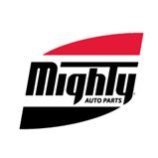-
Welcome to Auto Parts Forum
Whether you are a veteran automotive parts guru or just someone looking for some quick auto parts advice, register today and start a new topic in our forum. Registration is free and you can even sign up with social network platforms such as Facebook, X, and LinkedIn.
ELECTRICAL CONNECTIONS OR LOW VOLTAGE: Both Can Create Intermittent Electrical Challenges
-
Similar Topics
-
By Mighty Auto Parts
The post
link hidden, please login to view appeared first on link hidden, please login to view. When diagnosing engine performance complaints such as misfire symptoms, be advised that several systems and components can contribute to those symptoms. When considering single or multiple misfire codes, some checks may seem farfetched but trust me if not all are considered the symptoms can elude the most experienced technician, resulting in a misdiagnosis. When this […]
The post
link hidden, please login to view appeared first on link hidden, please login to view.
link hidden, please login to view -
By carbdoc
I cannot find a remanufactured brake booster for my 1978 Dodge D-150 truck with 400 c.i.d. engine to save my life! Yes, I can send mine out for rebuilding and hope that it comes back correctly repaired (or comes back at all), but I don't want to take my truck completely out of service while I wait for it to (hopefully) be correctly rebuilt. I would, however, gladly settle for a "loose" rebuildable core.
If anyone reading this has a rebuildable core that they will sell to me, I would be quite grateful.
Jeff
-
By NAPA
Brad Sweet and the
link hidden, please login to view No. 49 team had an exciting and eventful week of racing starting in Lincoln, NE, before continuing on to Knoxville Raceway in Iowa to compete with the World of Outlaws. On Tuesday, June 11th, Sweet arrived at Eagle Raceway to vie for the $50,000-to-win Bikini Zone Eagle Nationals. The day began with a special visit to the local Lincoln NAPA Auto Parts store, where Sweet had the pleasure of meeting store owner Randy Sell, his employees, and VIP customers. Following the private meet-and-greet, the Kasey Kahne Racing No. 49 team hosted 30 guests from the Lincoln NAPA store at the track for an evening of high-energy sprint car racing.
To start off the competition, Sweet qualified ninth in Flight A with a time of 11.661 seconds. Setting the lineup for Heat Race action, the NAPA No.49 made an impressive move from fifth to third. The evening’s feature was a showcase of Sweet’s skill as he surged from 13th to finish in the runner-up position. The NAPA driver gave leader Kyle Larson no room to spare, and his impressive advance thrilled the crowd and made for a wildly entertaining race.
As a result of his strong showing, Sweet extended his lead in the points standings. He now holds 1,612 points, maintaining a 76-point lead over the second-place competitor Tyler Courtney.
With a scheduled off weekend from the High Limit Racing Series, Sweet and the KKR team opted to gain extra track time by heading to Knoxville Raceway to compete with the World of Outlaws. The visit to “The Sprint Car Capital of the World” allowed the team some extra preparation ahead of the Knoxville Nationals in August.
On Friday, June 14th, Sweet and the team took a chance on testing set-ups before the big dance in August. The Big Cat qualified 12th in Flight B with a time of 16.390 seconds. In heat race competition, Sweet advanced from sixth to fifth, and in Friday night’s feature, he charged from 20th to 15th. The NAPA team still had one more chance to progress on their set-ups for Knoxville Raceway the following night.
Saturday night proved to be a night of redemption as Sweet continued to push the limits. Qualifying 10th in Flight B with a time of 16.306 seconds, the NAPA Auto Parts No.49 was on the move. Sweet went on to power through his heat race, finishing third after starting from fifth. In the final feature of the weekend, Sweet demonstrated his skills once again, climbing from 12th to finish ninth when the checkered flag dropped.
Start / Finish:
Tuesday, June 11, Eagle Raceway: 13 / 2
Friday, June 14, Knoxville Raceway: 20 /15
Saturday, June 15, Knoxville Raceway: 12 / 9
Points Standing / Total: 1st / 1,612 pts. (+76)
Next Race: Wednesday, June 19, Huset’s Speedway, Brandon, SD
How to Watch or Listen:
link hidden, please login to view NAPA:
link hidden, please login to viewBrad Sweet: link hidden, please login to view
Kasey Kahne Racing: link hidden, please login to view The post
link hidden, please login to view appeared first on link hidden, please login to view.
link hidden, please login to view
-




Recommended Posts
Join the conversation
You can post now and register later. If you have an account, sign in now to post with your account.
Note: Your post will require moderator approval before it will be visible.